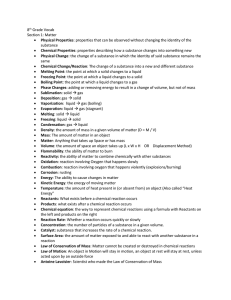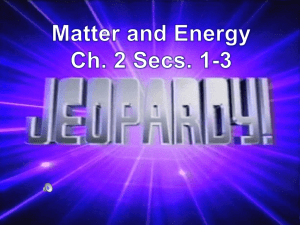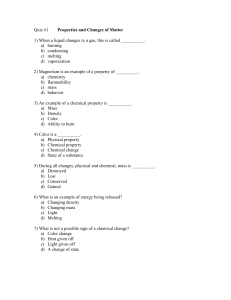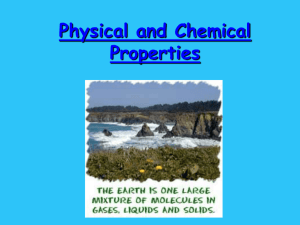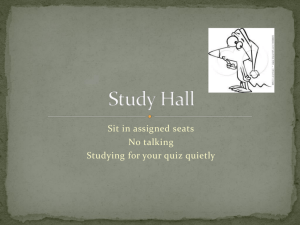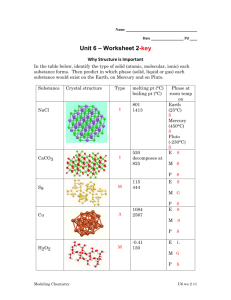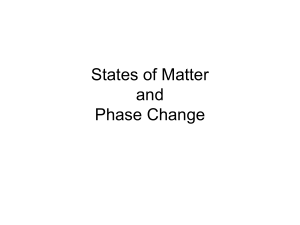File - Ms. Van Wart's Science Page
advertisement
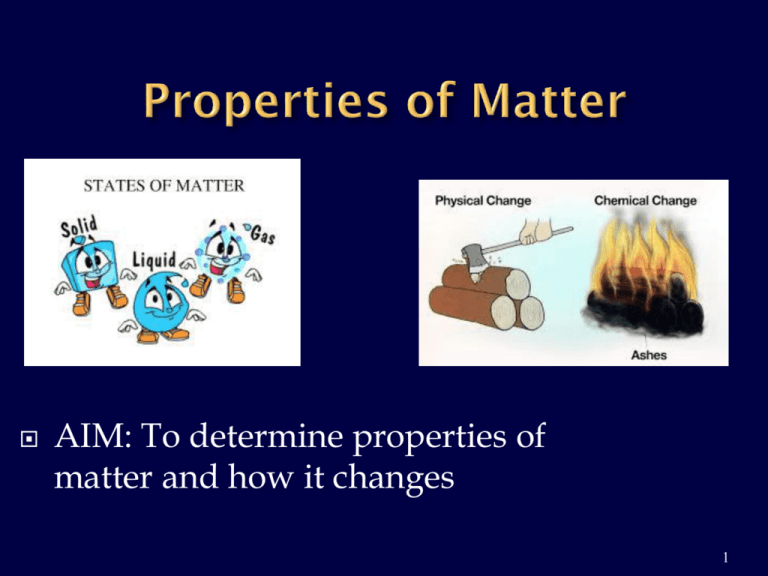
AIM: To determine properties of matter and how it changes 1 Physical properties are characteristics that can be observed or measured without changing the identity of the matter. Examples of physical properties : color, size, texture, shape, odor, hardness, density, magnetism, luster, phase (solid, liquid, or gas), and melting, freezing and boiling point. Describe the physical properties of a raw egg. Clear egg white, round yellow yolk, fluid… A Physical change is a change that does not produce a new substance or change the chemical composition of a substance. Ex. Crumbling or tearing paper Physical changes: Evaporation of water Boiling of water Condensation forming Melting Freezing What are some physical properties? What is luster? What is hardness? Physical Property or change? Pen has blue ink ? Glass breaking? Metal is shiny? Water steams in teapot Which Property or change? Sandpaper is rough & bumpy ? Water droplets form on mirror after hot shower? Icecream melts ? Sugar dissolves in water? Recall the physical properties of a raw egg. What happens to the physical properties of an egg when you cook it? A chemical change is a change that produces a new substance and may release thermal (heat) energy, light, or electricity. Ex. Corrosion, Burning, rusting, & digesting Metal (Silver spoon) corrodes or tarnishes when oxidized. Leaf changes color is a chemical change. Chlorophyll loses green color and other colors show through Bleach spills on jeans and changes the color. Some chemical properties would include flammability, reacts with an acid, ability to neutralize an acid, supports combustion. Helium balloon explodes by flame HCl on limestone produces Carbondioxide fizz Wood burns to ashes as oxygen supports combustion. Is this a physical or chemical change? Physical and Chemical Burning a candle Breaking a rock in two Digesting food into nutrients Flattening clay Is this a physical or chemical property? hardness flammability Melting point Reacting with acid to form H2 Is this a physical or chemical change? Ice melting milk souring Sugar dissolved in water Burning gasoline for fuel What is an element? It is the simplest substance that can not be broken down further. It is made of one type of atom What is a compound? It is made of 2 or more elements chemically combined in a specific ratio. Would this represent an element or a compound? A. B. Matter can change physically It however will remain the same substance, but in a different form. Examples: melting, freezing, boiling 24 solid turns to liquid absorbs heat energy as atoms speed up ex. Ice melts at 0°Celsius liquid turns to solid releases heat energy as atoms slow down ex. Water freezes at 0°Celsius Change of state from liquid to a gas Boiling occurs at a liquids boiling point and occurs throughout the liquid. Ex. Water boils at 100 ° C Evaporation water evaporates slowly from the surface of the liquid. Ex. Water absorbs energy from your skin, you feel cooler Process of changing a solid to a gas directly without the liquid stage. Absorbs heat as atoms increase speed. Ex: Dry ice (frozen CO2) sublimes Process of changing a gas to a liquid. Releases heat as atoms slow down. Example: water condenses on mirror when taking a hot shower. Phase Diagram D E B A C Exothermic reactionchemical reaction in which energy is released or removed. Cold reaction Endothermic reactionchemical reaction in which energy is absorbed. Hot Rx.


